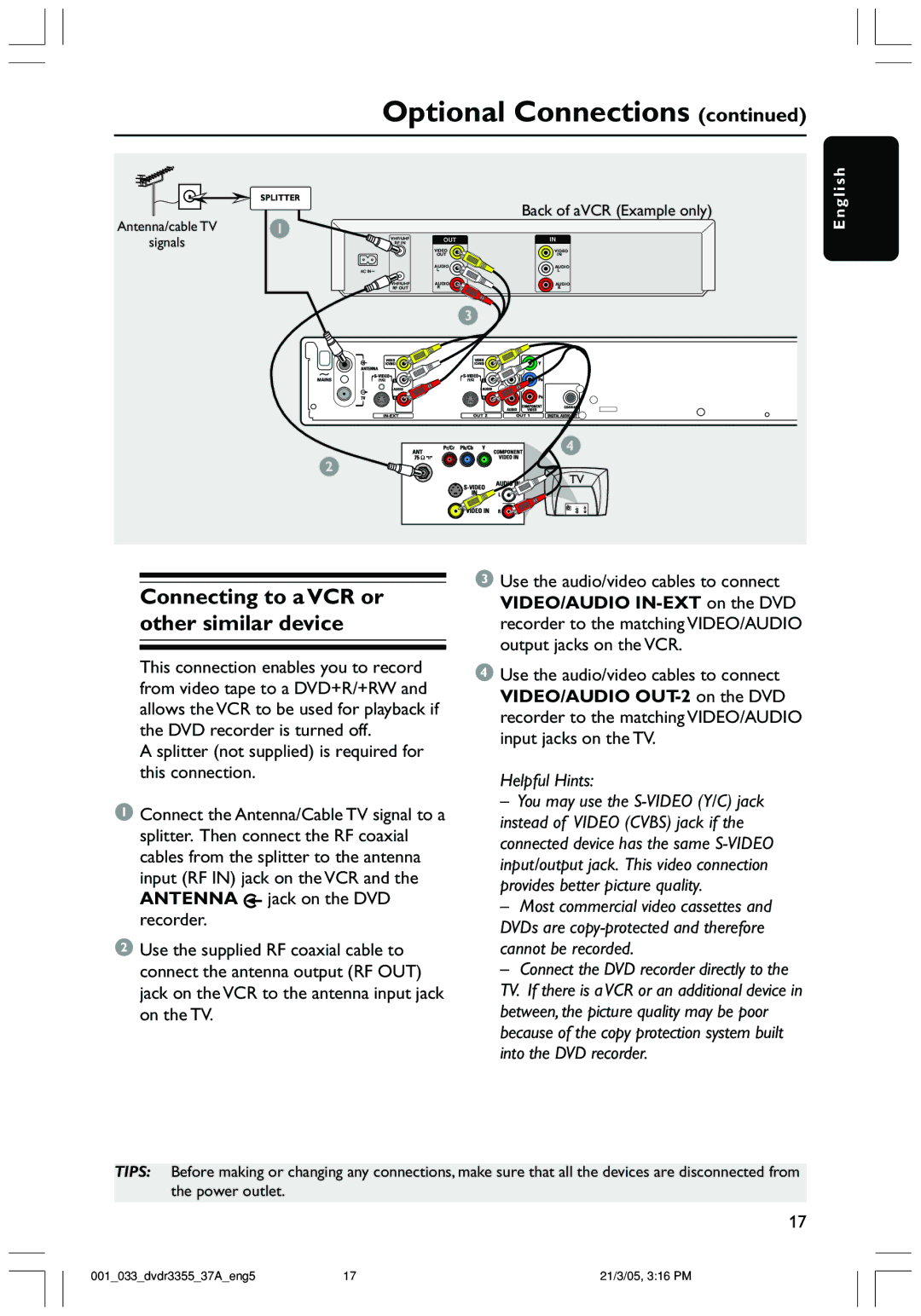
Optional Connections (continued)
| SPLITTER |
Antenna/cable TV | 1 |
signals |
|
VHF/UHF | OUT |
RF IN |
|
| VIDEO |
| OUT |
| AUDIO |
| L |
VHF/UHF | AUDIO |
RF OUT | R |
3
Back of aVCR (Example only)
IN
VIDEO
IN
AUDIO
L
AUDIO
R
E n g l i s h
4
2
TV
Connecting to a VCR or other similar device
This connection enables you to record from video tape to a DVD+R/+RW and allows the VCR to be used for playback if the DVD recorder is turned off.
A splitter (not supplied) is required for this connection.
1Connect the Antenna/Cable TV signal to a splitter. Then connect the RF coaxial cables from the splitter to the antenna input (RF IN) jack on the VCR and the
ANTENNA ![]() jack on the DVD recorder.
jack on the DVD recorder.
2Use the supplied RF coaxial cable to connect the antenna output (RF OUT) jack on the VCR to the antenna input jack on the TV.
3Use the audio/video cables to connect VIDEO/AUDIO
4Use the audio/video cables to connect VIDEO/AUDIO
Helpful Hints:
–You may use the
–Most commercial video cassettes and DVDs are
–Connect the DVD recorder directly to the TV. If there is a VCR or an additional device in between, the picture quality may be poor because of the copy protection system built into the DVD recorder.
TIPS: Before making or changing any connections, make sure that all the devices are disconnected from the power outlet.
17
001_033_dvdr3355_37A_eng5 | 17 | 21/3/05, 3:16 PM |
